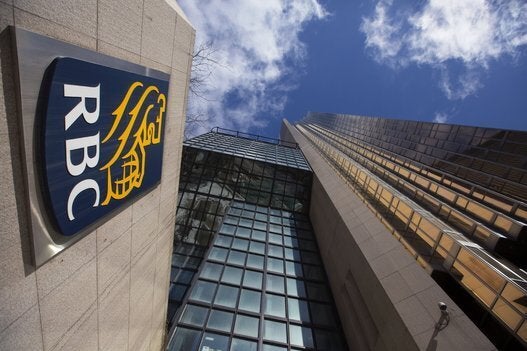The last thing Canada’s heavily mortgaged homeowners need is an increase in monthly payments, but some experts are saying this is exactly what’s ahead.
With earnings plunging in the oil patch and Canadians holding record levels of debt, the country’s banks are turning riskier, and that means higher borrowing costs ahead.
Fitch ratings agency “expects the cost of credit to rise in Canada as banks feel continued pressure” in the tougher new economic climate, the company said this week.
"Consumer credit health is a concern due to the record household debt levels and … pressure on consumer loan portfolios in oil provinces, which is pushing up delinquencies in auto lending and credit cards," Fitch Senior Director Doriana Gamboa said in a statement.
Consumer insolvencies are indeed on the rise in Canada. Personal bankruptcies are up 6.3 per cent in a year, while “consumer proposals” — an increasingly popular alternative to bankruptcy — jumped by 13.2 per cent. That's happening as Canadian household debt hit yet another record high, and now sits at $1.65 owed for every dollar of disposable income.

Riskier borrowers mean riskier banks. Canada’s big banks have been named the world’s safest repeatedly in the years since the financial crisis of 2008, but that may be coming to an end.
Bloomberg reports that Canadian banks’ leverage ratio — a measure of how well a bank can absorb a loss — is now worse than at banks in the U.S. or Europe.
The six largest banks in Canada have a leverage ratio of 3.9 per cent, lower than the 4.6 per cent among Europe’s largest banks and 6.6 per cent for the U.S.’s six largest banks, Bloomberg reports.
“Of the publicly traded banks in the 35 countries we’ve reviewed, the Canadian banks rank near the bottom on both the leverage and Basel ratios,” Robert Wessel of Hamilton Capital told Bloomberg. The Basel ratio is another measure of bank health.
Some of these U.S. and European banks have become safer than Canadian banks because they’ve been labelled “too big to fail” and have to live up to tougher financial stability standards than Canadian banks.
'Manageable' risk
Still, the riskier a bank, the more it has to pay to borrow, and the lower its earnings, the more it has to extract from its remaining loans to stay profitable.
And while Canadian banks may be more exposed than U.S. ones to the energy industry, Fitch still sees the risk involved as “manageable.”
“Strong asset quality, robust housing demand, and low interest rates offset some of the pressure for the Canadian banks,” the ratings agency said.
“However, if sustained energy price declines dampen economic activity, Fitch expects to see broader consumer lending asset quality deterioration.”
Also on HuffPost
